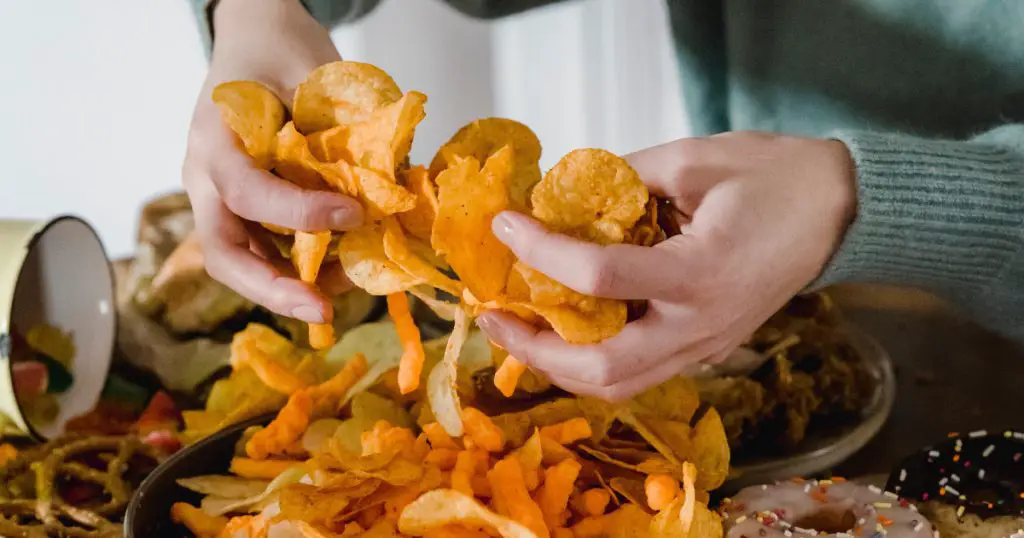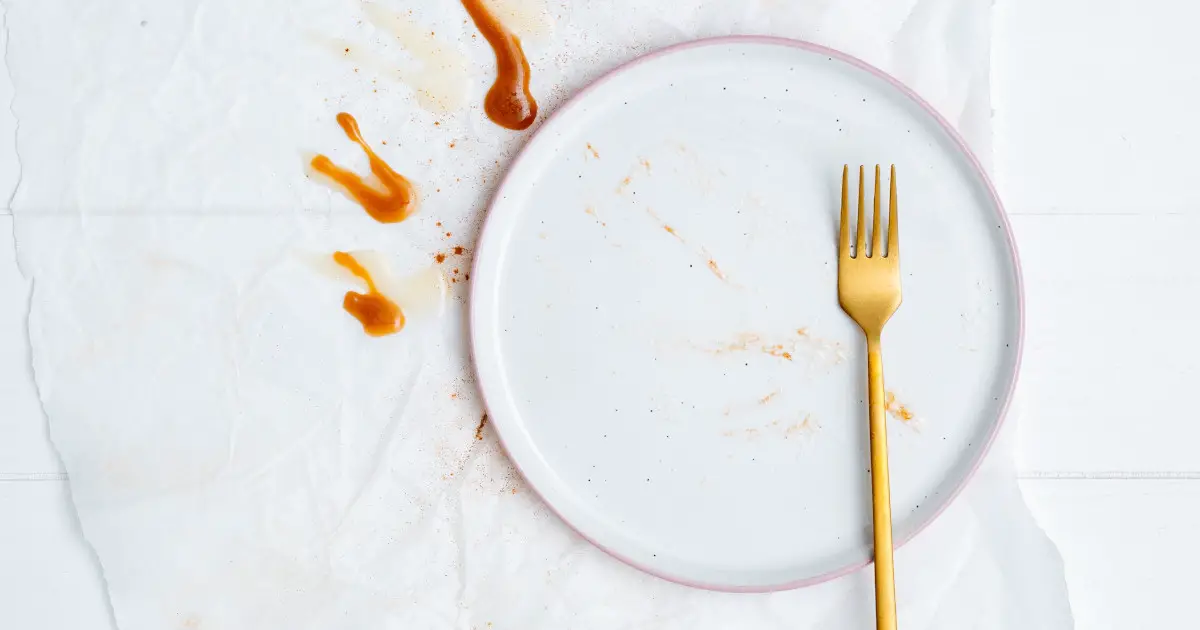Last Updated on: 16th November 2023, 07:58 pm
Here’s why Keto can be a contradictory diet.
It’s a diet based around fats, the very things that should keep you feeling full and decrease your appetite. But your body is a tricky thing, and it’s never going to make it easy for you.
Let’s get one thing straight, no matter what it feels like, you’re not starving (from a medical point of view at least).
But your hunger pains are 100% real. Even worse, sometimes they stay with you even after you’ve eaten everything on your plate.
That’s because these feelings of hunger are really powerful. It’s your body’s way of telling you it doesn’t understand what you’re doing to it; the body is adjusting to using fat as its primary fuel source instead of carbohydrates and the body doesn’t like change – in the beginning at least.
But the good news is you’re not the only persont to feel like this (I’ve been there too), and it will get better, I promise. So to keep you on track, here are nine ways to help you control hunger and reduce cravings while following a ketogenic diet.
Keto and hunger control
One of the most effective strategies for managing hunger on a ketogenic diet is to focus on the basics of the keto diet itself: high protein, high fat, and low carbohydrate foods.
Protein is particularly important, as it helps to keep you feeling full and satisfied. Good sources of protein on a ketogenic diet include meat, poultry, fish, eggs, and dairy products.
Use healthy fats to suppress your appetite
Incorporating healthy fats into your diet can help to control hunger. Healthy fats include avocados, olive oil, coconut oil, and nuts and seeds. These types of fats are satisfying and can help to keep you feeling full for longer periods of time.
Keto-friendly vegetables can be filling
In addition to protein and healthy fats, it’s important to include plenty of low carbohydrate vegetables in your diet. These can help to add volume to your meals, without adding too many calories or carbohydrates.
- Good – Leafy greens, broccoli, cauliflower, and bell peppers are all good choices.
- Avoid – starchy vegetables, such as potatoes, parsnips, yams and sweetcorn
Diet stacking to double your progress
Quick results are a great motivator, so consider stacking diets to double your progress. One popular strategy for managing hunger on a ketogenic diet is to practice intermittent fasting. This involves restricting your eating window to a certain number of hours each day, which can help to reduce hunger and cravings. For example, you might choose to eat only during a six-hour window, and then fast for the remaining 18 hours of the day.
If you’re looking for more detail, or something slightly different, here are some diets that have worked well for us while on keto:
Portion control
Portion control is also important when it comes to managing hunger on a ketogenic diet. Be sure to pay attention to serving sizes and aim to eat until you are satisfied (or hit your targets), rather than until you’re stuffed.
There are a bunch of strategies to help you with portion control below:
- Measure your portions: Do you know what a portion looks like? (The bad news is it’s often smaller than you might think). That’s why you should use measuring cups or a food scale to help you accurately portion out your food, especially when you’re first starting a keto diet. This means you know you’re eating the amounts you should, so are making progress, along with the reassurance you’re not actually starving yourself (regardless of what your stomach might be trying to tell you!)
- Use smaller plates: Smaller plates can help you feel like you’re eating more, even if you’re eating less food. This can be especially helpful when you’re trying to reduce your portion sizes on a keto diet.
- Eat slowly: Taking your time to eat can help you feel fuller faster (it takes about 15 minutes for your stomach to register a feeling of fullness from what you’ve already eaten), and it can also help you be more mindful of what you’re eating. This can make it easier to control your portions and avoid overeating.
- Don’t skip meals: This one may seem strange – if you’re hungry, skipping meals might seem like the last thing you’d do! But when things get busy, we sometimes just don’t have time to eat and this can lead to overeating later on, throwing your portion control right out the window! Instead, try to eat regular, balanced meals throughout the day to keep your hunger in check.
- Plan ahead: Meal prep can be a helpful tool for portion control on a keto diet. By prepping your meals and snacks in advance, you can ensure that you have healthy options available when you’re on the go and less likely to skip meals or make poor food choices.
- Avoid eating in front of the TV or while distracted: We all know this one, but eating while doing something else is probably the most popular form of “multi-tasking”. Unfortunately it can lead to unconscious eating and a lack of awareness of how much you’re consuming.
Monitor your keto progress
There’s an old saying “you can’t manage what you can’t measure”, and this applies to diets as well.
When your body is telling you you’re hungry, it’s nice to have the reassurance that you’re actually busy burning fat in ketosis!
Just as importantly, if you’re not in ketosis, you need to know that as soon as possible so you can work out why.
There are some great tools to help with this, check out our blog comparing Ketone meters – blood vs breath vs strips for the basics on how these can help.
Water
Another cheap, easy and effective strategy is to drink plenty of water; hydration can help to reduce hunger and cravings. Aim to drink at least eight glasses of water per day, and consider adding a pinch of salt to your water to help replenish electrolytes.
Suppress your hunger the natural way
If you keto attempts are making you constantly hungry, incorporating natural appetite suppressants into your diet can also be helpful.
For example, incorporating foods like grapefruit, green tea, and cinnamon can help to reduce hunger and cravings. Herbal remedies such as hoodia and garcinia cambogia may also be effective at reducing hunger.
Many people also take advantage of supplements. Herbtonic’s Apple Cider Vinegar Capsules have been shown to increase your blood ketone levels to get you in ketosis faster. Once you’re in ketosis, blood glucose levels are naturally low, so more ketones in the blood means more energy with less of those sugar cravings.
Mindful eating – make the most of your food

Practicing mindful eating can also be helpful for managing hunger on a ketogenic diet. This involves paying attention to your body’s hunger and fullness cues, rather than eating mindlessly or due to emotional triggers.
Take the time to sit down and fully enjoy your meals, and try to avoid distractions like television or phones while eating.
- Pay attention to your hunger and fullness cues: When following a ketogenic diet, it is important to pay attention to your body’s hunger and fullness cues and eat until you are satisfied, rather than stuffed. This can help to reduce cravings and prevent over-eating.
- Practice portion control: I’ve mentioned this one before, but be mindful of serving sizes and aim to eat appropriate portions of food. This can help to reduce hunger and prevent overeating.
- Avoid distractions when eating: Avoid distractions such as television, phones, or computers while eating, and take the time to fully focus on and enjoy your meals.
- Eat slowly: Eating slowly and savoring each bite can help you to feel more satisfied and full. It can also help to prevent overeating and reduce cravings.
- Be present in the moment: Practice mindfulness techniques such as deep breathing or meditation to help you stay present and fully engaged in the experience of eating. This can help to reduce stress and improve your overall sense of well-being.
- Practice gratitude: Before starting a meal, take a moment to reflect on and appreciate the food you are about to eat. This can help to shift your focus from the food itself to the experience of eating.
- Avoid eating mindlessly: Try to avoid eating out of boredom or as a response to emotional triggers. One idea that might help is to put food out of reach or make it harder to access. Instead, make a conscious decision to eat when you are hungry, and choose keto foods that will nourish your body and keep you on your diet path.
Stress, sleep and sugar cravings

Finally, it can be helpful to manage stress and get enough sleep when trying to control hunger on a ketogenic diet. Stress and lack of sleep can both increase hunger and food cravings, your body wants the quick fix that sugar will bring.
This makes it is important to prioritize self-care and stress management techniques such as meditation, yoga, or exercise. Getting enough restful sleep can also help to regulate hunger hormones and reduce cravings.
So, why am I always hungry on keto?
You probably came to this blog looking for quick and easy answers for hunger and your keto diet and instead we’ve given you 9 reasons you might be hungry, and a lot of ideas about how to handle that feeling of hunger
In summary, if you’re asking yourself why am I always hungry on keto? it’s important to realise that yes, you might feel hungry, but hunger is a stage you go through on the way to ketosis.
Unfortunately, for many people it’s a necessary part of the process, but once you’re in ketosis, the benefits to your health and the way you feel will make it worth it.
After all, rewards are always better if you;ve had to work to get there.

Nick has been involved in nutrition for over 20 years, at one stage weighing over 110kg (17 stone) and after experimenting with a combination of diet and exercise, has bought this back to around 80kg (12.5 stone). He’s currently running-obsessed, logging over 50 kilometres (30 miles) a week, and has been working in the nutracutical and supplements space for the last 5 years. He believes health and wellness start with the individual – you have to know what you’re doing, and have the passion to stick with it to get the results you want.
